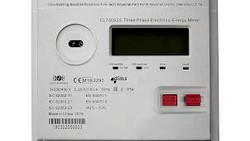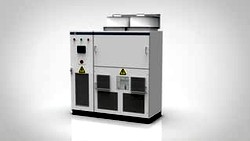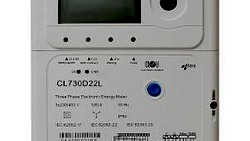
Electrical energy utilities are using the load shedding method to reduce the demand and balance it versus the energy generation. The principle is to switch-off the power supply for certain regions on a rotating schedule base, e.g. two hours ON, then two hours OFF. This schedule is published by the local utility.
I've experienced it myself in several countries. Shopping malls are running diesel generators to continue business. Private energy storing systems are in use. It's a big impact on domestic- and commercial energy consumers.
For sure the utility has already taken all measures to increase the power generation capacity. So the typical wise recommendations like ramping up another power plant will not help. Energy storage in batteries or by pumping water into an upper lake for later use with a turbine are mainly temporary measures to overcome a peak-load.
The load shedding method is old. The shedding is done based on historical values for demand. This leads to a huge uncertainty regarding the actual required energy demand. A complete region can never be accurate balanced with the power generation. So to avoid a complete blackout there will be always more power generated than required.
Now we have a bunch of new technologies together with new challenges like public- or private installations for renewable energy generation.
What can we do?
We cover here only the aspects related to metering and the article is simplified.
- Data acquisition
Without proper information about the customer power consumption the utility has no other choice but to go on load shedding. When the utility has customer- and regional load profiles together with meteorological data like regional wind speed and sunshine duration, it's able to make a more reliable demand prediction.
Data acquisition requires an AMI system solution. With enough data we can predict the next 15 minutes forecast with good accuracy. - Customer Education by Billing
We have now the data and know that the power generation is not sufficient to fulfil the demand. It turns out that a billing based on maximum demand is a helpful measure to reduce the peak-load. Now utilities are asking for maximum demand measurement even for domestic customer. - Programmed Load Limiting
All AMI-meters have a built-in relay for different purposes. This relay can also be used to limit the customer load. If the load exceeds a programmable threshold, the meter disconnects the individual customer, while all others still have power. Once the customer has reduced the load, the power is restored according to a certain algorithm.
The load limit can be set in the energy meter and is reprogrammable by the AMI system.
Reprogramming takes some time, so it's nothing for emergency situations - Flexible Load Limiting
As you know the net-frequency is the critical value to indicate a upcoming power shortage. Electronic energy meters can be programmed so it's no problem to set the load limit internally according to a linear- or progressive function to keep the frequency stabil. In that way each individual meter takes care about a part of the system stability and all customers have power supply. Implementing this feature needs some skills to find the right formula for the load/frequency relation. The related basic data can be retrieved from the AMI system.
No customer has ever asked for it, we are using theoretical models for evaluation.
With the above measures also the power supply for public services (hospital, police…) can be maintained. With load shedding a lot more generators are required.
Restoring of Power Supply after the Shedding Period
Once the power returns to a certain region you have to deal with a huge inrush currents. Electromechanical energy meters do not have a protection for this. The result is early ageing or damage of home appliances.
If you have already electronic meters in the field, why are they all powered-up at the same time? We have solutions for a sequential energising or the end-customer e.g. within one minute after the power is restored. This helps to reduce the inrush on generator side and makes the network more reliable. Just ask us.
Final Thoughts
Load shedding is still necessary in many regions with electromechanical energy meters. Electronic meters provide much more possibilities for load balancing and grid stabilisation.
Thank you for reading
Editor's note: This article was originally published in June 2020 and has been updated for comprehensiveness.





Thanks for so good paper fro shedding energy. Sometime ago we are installing, done by urselves, now trying to import from China, CT&PT Combined, where most of users can select tariff in Medium Voltage up to 33 KV. This means less 4% energy cost in comparison to buy in Low Voltage. Also can manage the Peak Demand on Peak Hours, meaning from $ 2/Kw OFF up to $ 12/KW ON Peak Hours. Regretaley, most of them use Diesel Generation On Peak Hours, that means money and contamination- So, our idea is to resolve by renewable generation, that can be recover no more than 4-5 years. This can be used from 6 PM up to 11 PM. We could study a solution together? Please inform. ( Also no one use AMI or AMR, is very expensive from US suppliers)
Mariano, thank you for your comment and for sharing your experience. Our regional team will contact you by mail.